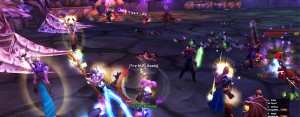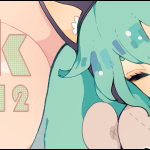Game Sho – Free To Play Is The Future

Back then, games were worth much more than just a pretty penny. Now, we complain about how expensive games are priced at 60 dollars. With the indie scene and the wealth of good games for under 20 bucks on XBLA and PlayStation Network, tons of great games under two dollars in the iOS app store, and companies going bankrupt even when they’re selling millions of games, it’s easy to wonder what the value of a game really is. Do big MMO’s like WoW have your future pay checks? Or are the Triple A publishers going to get you more bang for your buck? If you think about it, free to play is the way to go.
What is a free to play game? It’s a game with no money barrier to entry but still end up involving some sort of payment, optional or not. These are generally online MMO’s of some fashion. Some may wonder how a company would even be able to do that. How a company can let you play a game for free and still be able to function. The trick is the fact that they just get your money later on. I’m sure you have seen it; you’re feeling a little lazy one day and you don’t want to spend time waiting on your plants to grow in Farmville. All you need to do is spend a small sum and your plant is done growing. Many social games right now use real money to enable you to get farther in the game than you normally would, make the game easier, or power you up in some way.
Even though these games are free to play, these games can cost you much more than a regular game. On iOS, there are many games for about a dollar. There are also many games that don’t cost a dime. Obviously, people are more inclined to download the free games. There, people can be tricked into buying their way into a game that originally cost no money, but is impossible to get past a certain point without paying money. Those are only a small percentage of games though. Right now, free to play engineers are looking to find more ways to get people to buy things in their “free” games. They are all businessmen. Intending for you to download their game and spend money, their game is purely a product.
There are many ways that someone can get you to spend money on a free to play game. In fact, that’s what these businessmen research. For example, Farmville does what you call AB testing. AB testing is where you have two versions of a game, version A and version B. Half of the players have version A and the other half, version B. Say version A had a pair of boots for sale in the store that you had to pay money for and it was red. Then in line with AB testing, version B would have a different color, like blue. Then they would record the data of which version of the game sold more boots. If red was sold more than B, then they would merge the two versions with red boots being sold in the shop. This way, the company can obtain hard data to increase their profit. They treat people not as people, but as a consumer. They don’t make a fun game, they make a game that is solely for the making of money.
Other than these overt strategies to get your money, some game companies are looking to exploit people. There are strategies focused on not just forcing you to buy in-app purchases or use real currency in the game, but convincing you through psychological persuasion. Let’s say that you are playing an MMO of sorts. You like to play with your significant other on this MMO. In the MMO, you would come across a hard boss with them and they end up getting defeated. There would be an option to buy a revive for them. What the developer might think is to deliberately make it harder on players playing with a significant other so that these players would buy an item that costs real money. A revive that on an emotional level would be a no-brainer for the customer. The game developer does not have to care about whether or not the game is fun however. Many people can play a game for a long period of time if it is interesting enough, and during this period of time the developer can develop more strategies to hook the player. This does not necessarily mean that the game is fun though, this can mean that the game has something that the player becomes invested in. Some developers try to create a game that people can play indefinitely, pouring money continuously into a game that in most circumstances would not be fun. This is adverse to the idea of creating a finite game that costs $60. In the case of a finite game, it only makes money for a limited amount of time while a free to play game with infinite content would have a longer duration of time in which they receive profit. They also have the benefit of an extremely low barrier to entry, that is free.
It is quite obvious that free to play is the way to go to make the most money. It is not that much of a concern though because as long as you can recognize these things and only play a game that you enjoy, you will be fine. There is no doubt that these strategies will become more prevalent in the coming years, but with the wealth of indie games and smart people, I am sure that there is nothing to worry about.
Now, last article I wondered which game I should buy to review and I only got a couple of votes and hardly enough time to play any. I will ask again this week to see if I can procure any more votes for either FTL or The Binding of Isaac. Thank you for reading this week’s Game Sho!


















iStalk? uStalk!